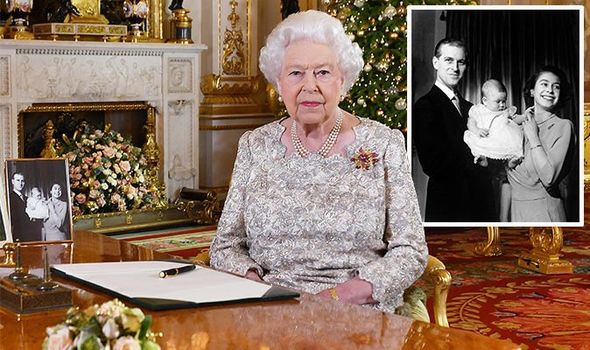
Queen Elizabeth II Dies and Britain Declares 10 Days of Mourning
On the morning of July 12, Britain will mark 10 days of national mourning, with the funeral service scheduled to begin at 11 a.m. (that’s six hours from when she passed away). A two-minute minute silence will be observed nationwide, and the Last Post and the Reveille will end the hour-long service. A funeral procession for Elizabeth will then commence, possibly stretching as far as 1.5 miles. The procession will pass through Buckingham Palace and continue to the Wellington Arch, where her body will be laid to rest.
Operation London Bridge
The death of Queen Elizabeth II sets in motion an elaborate plan for her funeral and transition of power. This process is going to dominate Britain’s agenda for days, and it could cost billions of dollars. It’s all part of Operation London Bridge, and the plan is codenamed “London Bridge.”
On the day of her death, the flag at Buckingham Palace was at half-mast and a sign proclaimed the queen’s death. Television newsrooms were ready with coverage. The government of Britain has announced an official period of mourning that will last for 10 days, and the country is going into a state of mourning. The funeral is expected to take place on Monday, and it’s likely that the day after her death will be a public holiday.
The plans for the funeral date have been in the works for decades. An army of courtiers is finalising the details of the state funeral. One of the most complicated aspects of the plan is the return of the Queen’s body. Organizers are trying to make it appear as if it happened naturally.
A detailed plan has been drawn up and a call cascade will be put into place. The prime minister, cabinet secretary, and Privy Council Office will be notified first, and then the news is shared to the public. The plans also include a plan for what to do in different situations. If the Queen dies during the night, an announcement will be made at 8 a.m. The royal court also has a staff hotline, which will be used to distribute the news to employees.
Queen Elizabeth’s funeral
After the Queen’s death, there are various levels of protocol that will be followed, from the order of the flag to the reburial service. The death will be announced to the British Press Association and the palace will stage a display of mourning. The royal family will also issue official statements and Prince Charles will deliver a broadcast to mark the monarch’s death.
Afterward, the coffin will be moved from Balmoral to St Giles’ Cathedral, where a private service will be held for family and friends. The coffin will lie there for three days. The processional route will follow a classic East Coast Main Line route, which is the same one used by the Queen when she was on her final journey between London and Sandringham.
The details of a monarch’s funeral are usually top-secret, drafted by government departments and palace officials. As a result, only a small number of people are aware of the details of a sovereign’s funeral. Nonetheless, the regal funeral ritual is a huge news event for a ceremony-obsessed nation.
Before her funeral, the British government set up a plan to ensure that the country’s most important symbols are not disrupted. The plan is called Operation London Bridge, and it includes pre-planned ceremonies and processions. The military will be heavily involved in carrying out these activities.
Coffin to be moved to Royal Vault
A plan has been put in place for Prince Philip’s coffin to be moved into the Royal Vault after his death in 2022. His remains will be interred alongside Queen Elizabeth Dies II when she passes away. The vault is a 200-year-old underground space in the palace. It is the same location where the ashes of George VI and Princess Margaret are interred. It is thought that Prince Philip will be the 25th member of the royal family to be interred there.
The coffin will be brought to Edinburgh on Saturday. Once it reaches Edinburgh, it will be taken to the throne room of the Holyroodhouse palace, where the royal family will hold a private reception. The body will then be moved to Buckingham Palace on Tuesday. From there, the coffin will be processed around London. It will then be moved to the Palace of Westminister, where another service will be held.
The Royal Family will arrive at 3 p.m. and attend the committal service. The service begins at 4 p.m. At that time, Lord Chamberlain will break the white staff of office, symbolizing the end of the service. After the service, the Royal Family will return to the palace for a private burial. In addition, the remains of Queen Elizabeth will be buried in the King George VI memorial chapel in Windsor.
The process of moving a coffin to the vault was first used during Philip’s funeral. It is usually a private moment for the royal family. Prince Philip’s remains are interred in the vault as well as the ashes of 24 other royals, including three kings of England. The royal vault also houses the ashes of King George III, who ruled the country during the American Revolution.
King Charles to receive condolences at Westminster Hall
During his tour of the UK, King Charles will visit various locations, including Westminster Hall in London and the Scottish Parliament. He will also travel to Northern Ireland, where he will attend a funeral service at St Anne’s Cathedral. Then he will train for the procession of Queen Elizabeth II’s coffin to Westminster Hall.
The king’s visit will be his first since Queen Elizabeth’s death. Following the funeral service, he will make a whistle-stop tour of the United Kingdom, including a visit to the Scottish parliament and a service in St. Giles Cathedral in Edinburgh. He will also travel to the Northern Islands, where he will receive a motion of condolences at Hillsborough Castle. He will also attend a service in St Anne’s Cathedral in Belfast and Llandaff Cathedral in Cardiff.
Charles will become the King after his mother passed away, and the Accession Council, which normally convenes within 24 hours after a death, will formally recognize him as king. The Council will include members of the Privy Council, as well as officials from the City of London and the Commonwealth, a group of former British Empire nations.
As the mourning continues, Queen Elizabeth II’s body will lie in the Palace of Westminster for three days. The coffin will remain open to the public for 23 hours, including the day of the state funeral procession. On D-Day plus three, King Charles is scheduled to leave England for Wales, where he will receive condolences at the Welsh Parliament. He will also attend a memorial service in Liandaff Cathedral in Cardiff.
Britons to have day off if funeral is on a weekday
According to reports, Britain will grant Britons a day off to mark the funeral of the Queen on Sept. 18. The funeral will be attended by heads of state and VIPs from around the world. After the service, the queen will be buried at the King George VI Memorial Chapel in Windsor Castle. The day will be a national day of mourning.
If the day of the funeral falls on a weekday, employers are not required to offer time off. But in many cases, employers will allow employees to take the day off. The day is a day of national mourning and will be a bank holiday. However, it is up to employers to decide whether to give their workers a day off.
In the UK, Queen Elizabeth was the longest-reigning monarch in the history of the country. At the age of 96, she was one of the most beloved and enduring royal personalities of all time. Hundreds of thousands of mourners gathered outside Buckingham Palace to pay their respects to the queen, who was a great leader for her country and her royal family. The Queen’s doctors confirmed earlier Thursday that she was under medical supervision, and were concerned about her health. She had scaled back on public engagements as she struggled with mobility.
Transition of power
The transition of power after Queen Elizabeth’s death is a complex process. Her death kicks off a whirlwind series of events for the country. The process involves a coronation, a memorial, and the transition of power. The entire process will dominate the country’s agenda for days.
Queen Elizabeth has had a long and storied reign. She has ruled the country since 1952 and has presided over major changes in the monarchy. She ruled through 15 prime ministers, and she has become a symbol of stability. Although she has been less visible in her final years, her reign has left her in control of the monarchy. And when the transition of power after Queen Elizabeth’s death comes around in June 2022, her legacy will be central to the nation.
The transition of power after Queen Elizabeth’s death is a complex process, and it is important to have a succession plan in place and update it periodically. Without a succession plan, leadership transitions can lead to a crisis for organizations. Fortunately, the British monarchy has taken steps to address this issue in advance of a potential crisis.
The death of Queen Elizabeth will be a great loss for the monarchy. Her son Charles will automatically become monarch after the Queen’s death, although the coronation may not happen for several months.










